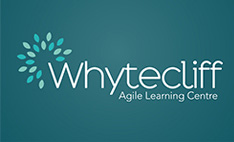One of the most common learning difficulties that any child may be faced with is Dyslexia, which often causes issues with reading, writing, and spelling. Dyslexia is a learning disability, which means it will have an impact on the functional skills associated with learning, but not the overall intelligence of the individual. It’s estimated that up to 1 in 5 children may have some form of dyslexia, making it one of the most common learning challenges.
The signs of dyslexia can be quite easy to spot ⎯ you’ll find that children who have the disorder struggle with some of or all of the following:
● Planning and organization
● Following directions
● Understanding written instructions
● Inconsistent or poor spelling
● Confusing the order of letters in words or numbers
● Reading and writing slowly
How Whytecliff can Help Kids with Dyslexia
Whytecliff offers the BC Ministry of Education accredited curriculum leading to a British Columbia Certificate of Graduation. Whytecliff also incorporates the new BC Curriculum’s intellectual, personal, and social-emotional proficiencies, with a special emphasis on youth development as well as positive mental health and wellness.
For children diagnosed with Dyslexia, Whytecliff adapts and modifies course materials and other aspects of learning to work in concert with each child’s unique strengths and talents as well as their particular learning needs. Once we tailor these learning materials and processes to their unique learning needs, children begin to develop an entirely new outlook on learning. Using a self-paced self-directed approach, we are able to engage children with dyslexia and provide opportunities to learn through different sensory modalities ⎯ auditory and visual methods or visual and tactile methods ⎯ according to each child’s personal interests and strengths.
Our low student to staff ratio of 5 or 6 students to 1 teacher allows our competent, warm, encouraging staff to see the world through each youth’s eyes, enabling them to be effective, caring, and empathetic educators. Traditional teachers can often work tirelessly to help students with dyslexia and families can often see little results. This happens because most people believe that children with dyslexia transpose or invert letters when reading, whereas current knowledge suggests dyslexia is better understood as sound processing disorder. We understand that unlike walking and talking, learning to read is not an innate developmental skill and that brain circuits associated with reading must be able to associate sounds to letters, build words, and comprehend meaning. We also realize that children with dyslexia may be prone to anxiety and depression from the shame of not seeing progress and achieving the same way as their peers.
Children with dyslexia are often aided by focusing on one or two courses at a time or working on a project that might incorporate elements of several other courses. These deeper and more meaningful levels of involvement encourage neuroplasticity or ‘deep learning’. Self-paced and self-directed courses and projects are intrinsically motivating as students are able to work at a rate that suits them and find the ‘sweet spot’ where they feel challenged but not overwhelmed. As children’s skills gradually improve, they’re able to complete courses at a faster rate as the program goes on. By helping children get back onto their feet, learn how to learn, and start to progress through their education, we open doors that pave the way to a brighter and more exciting future for children with dyslexia.
External Resource:
https://www.mayoclinic.org/diseases-conditions/dyslexia/symptoms-causes/syc-20353552
